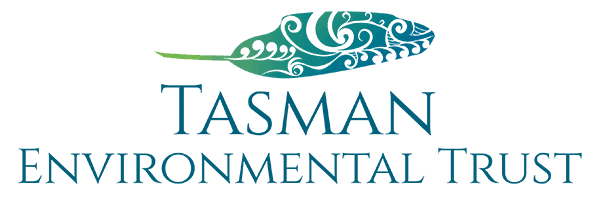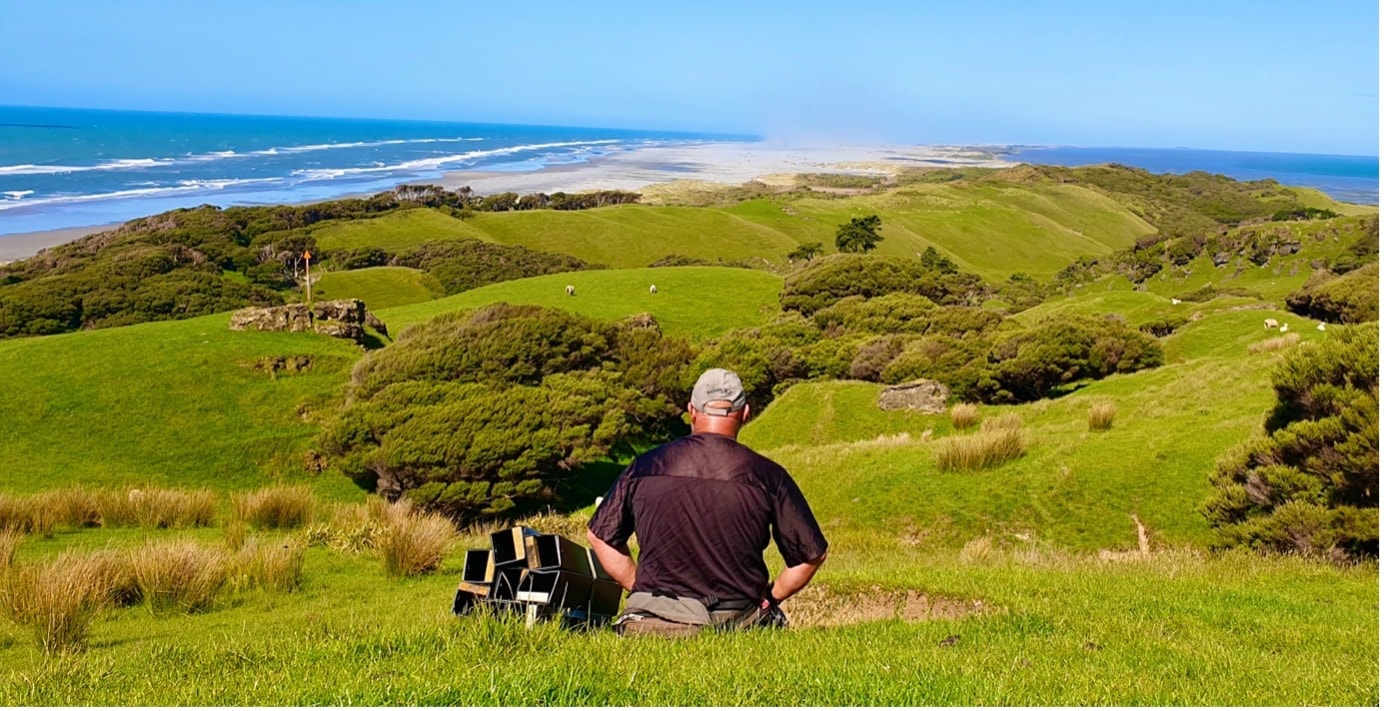Grounded in the local community, Pest Free Onetahua is a partnership between Tasman Environmental Trust, Manawhenua Ki Mohua, and the Department of Conservation. We also work closely with HealthPost Nature Trust, local landowners, businesses, and residents of Golden Bay. Together, we’re restoring a national taonga of global importance.
Pest Free Onetahua is a large-scale predator eradication project working to remove possums, feral pigs, and deer from Onetahua/Farewell Spit, and control stoats, hares, and rats in the surrounding areas. The project covers 12,000 hectares of unique landscapes—from the tip of Farewell Spit/Onetahua through Pākawau Bush in Kahurangi National Park to the edge of Whanganui Inlet.
Why is this important?
Onetahua/Farewell Spit is a Ramsar-listed wetland of international significance, recognised globally as a critical stopover for thousands of migratory shorebirds. It is also home to rare and threatened native species, including kiwi, spotless crake, and the nationally critical doterel.
Introduced predators threaten these species by destroying nests, eating chicks, and damaging habitat. Removing these pests will provide a safe haven and help to restore ecological balance – giving our precious wildlife the best chance to thrive and establishing a safe have for the re-introduction of endangered species, such as tākahe.
Building a predator-proof future
In partnership with HealthPost Nature Trust, Pest Free Onetahua is constructing a predator-proof fence along the Old Man Range, at the base of Farewell Spit. This will form a vital barrier to stop pests from re-entering once eradication is complete, protecting the Spit’s wildlife for the long term. The fence is a major engineering effort, and once in place, it will help create an area suitable for the translocation of endangered species.
Our vision
A predator-free Onetahua where native birds, plants, and wildlife flourish—and where future generations can enjoy the abundance of nature in this internationally significant reserve.
Latest Updates
January 2025 saw the team launch an ambitious rolling front of predator control from the far tip of the Spit back toward the mainland. This involved installing a dense trap network to target possums and rats, with hundreds already removed. So far, the catches include:
- 40 hares
- 73 pigs
- 400 possums
- 509 rats
Growing the trap network
The project has now deployed: 209 AT220 self-resetting traps, 161 DOC200s, 480 bait stations. Currently, this network covers about 500 hectares at the far end of Onetahua/Farewell Spit, running at full tilt to target possums and rats. A special addition to the team is Argos, a trained pest control dog working alongside Project Lead Corey Mosen.
Expanding the protection zone
New DOC200 traps have also been placed along a stretch from Pakawau Bush Road to Pūponga, strengthening pest suppression in the surrounding buffer zone. Planning is underway for a trapping and monitoring network at Triangle Flat with HealthPost Nature Trust —paving the way for the possible reintroduction of endangered species, if stoats can be eliminated.
Predator-proof fence progress
Winter’s wet weather slowed construction, but trail cutting is nearly complete. Next summer, helicopters will drop materials along the fence line, and four work crews will build simultaneously. The fence will finish near the HealthPost Nature Trust whare.


